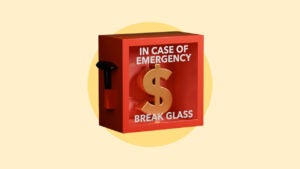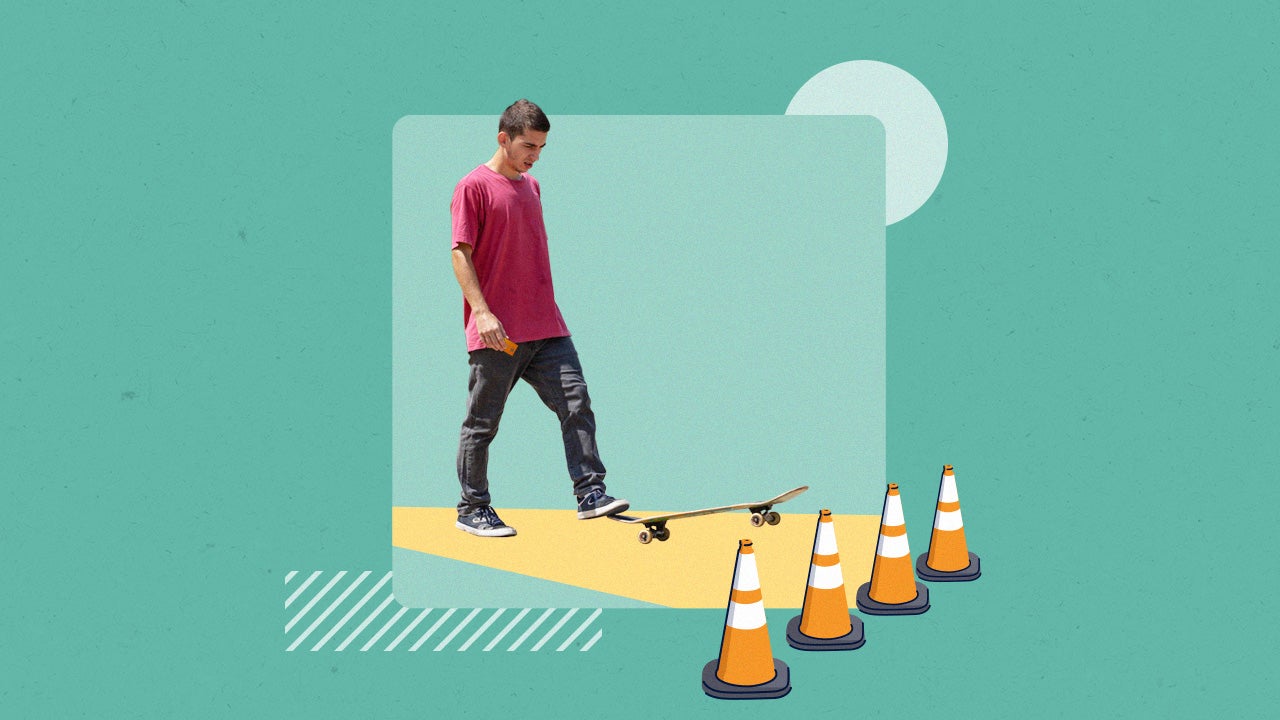Student loans and bankruptcy: What you need to know




Key takeaways
- To get your student loans discharged in bankruptcy, you’ll need to prove that they cause you “undue hardship.”
- Borrowers can choose between Chapter 7 and Chapter 13 bankruptcy, but they must file a separate adversary proceeding for student loans.
- The new processes established by the Department of Justice in 2022 have made it easier for borrowers to discharge student loans through bankruptcy.
Filing for student loan bankruptcy is never ideal, but sometimes, having debt discharged is the only way forward. This is especially true if you’ve been struggling financially and can’t repay your debts while still maintaining a minimal standard of living.
Many people believe it’s impossible to get student loans discharged in bankruptcy. That’s not the case — though you have to prove paying down the loans is causing you “undue hardship,” it tends to be a complicated process.
The U.S. Department of Justice and Department of Education announced in July 2024 that the new guidelines for discharging student loans in bankruptcy have led to an increase in borrowers applying for and qualifying for debt relief.
How to file for student loan bankruptcy
Declaring bankruptcy on student loans is not easy, and it will affect more than just your college debt. If you need to file for student loan bankruptcy, these are the steps to follow:
- Find a lawyer. The first step to filing for bankruptcy with student loans is locating a lawyer who has expertise in this area. It’s important to find an experienced professional, as not every lawyer works with student loan discharge. If you don’t know where to start, services like Upsolve — a nonprofit organization that provides free bankruptcy filing tools — could help you with the process. However, you should know that bankruptcy costs can be thousands of dollars. Being able to afford the attorney fees may mean that you’re ineligible for discharge based on undue hardship: Lawyers can argue that if you can pay attorney fees, you can repay your debts.
- Seek a free consultation. Some student loan lawyers might offer a free consultation. If so, take advantage of it. An attorney can review your options and let you know whether bankruptcy is a viable option for your situation.
- Decide whether you will file for Chapter 7 or Chapter 13 bankruptcy. You’ll need to choose between Chapter 7 or Chapter 13 bankruptcy, which have different rules regarding which assets you keep and what you’re required to pay for your student loans. Your attorney can help you consider your bankruptcy options and determine which is the best fit for your financial situation.
- File a separate adversary proceeding to discharge your student loans. This filing is similar to a lawsuit, but it happens in bankruptcy court. During the proceeding, you must prove how you meet the undue hardship standard. According to the U.S. Department of Education, you must be able to “demonstrate that repayment would impose undue hardship on you and your dependents.” Your creditors or representatives of your creditors may also show up at the proceeding to challenge your claims.
- Wait for a decision. The court may decide to grant your petition to discharge all of your student loans. It may also opt to grant a partial discharge of part of your loans, or no discharge at all.
Chapter 7 vs. Chapter 13 bankruptcy
The type of bankruptcy you should consider depends on your ability to work and receive a regular income, as well as the outcome you hope to achieve.
The two most common types of bankruptcy are Chapter 7 and Chapter 13.
|
Chapter 7 |
Chapter 13 |
|
|
Main features |
Known as “liquidation bankruptcy,” all nonexempt assets will be sold to repay some of the debts you owe. |
You’ll keep your property, but you must repay some of your debts on an agreed-upon timeline. |
|
What assets do you keep? |
Some personal items and possibly real estate (depending on your state of residence) |
Generally all property, and your home may be safe from foreclosure |
|
Who qualifies? |
You must pass a means test, which examines your income in comparison to your expenses and family size. |
You must earn a regular income and demonstrate an ability to repay your debts. |
|
How long does the process take? |
Typically 4 to 6 months for debt discharge |
3 to 5 years on a repayment plan |
|
How long does it stay on your credit report? |
10 years |
7 years |
How to prove undue hardship for student loans
While undue hardship can look different for each person, it generally describes a situation where it would be practically impossible to repay your student loans. Historically, student loan borrowers have had to clear a high bar to prove undue hardship.
There are three prongs to proving undue hardship:
- Undue hardship describes any situation in which a borrower can’t repay their student loans and also pay for necessities like housing or food. If you racked up significant student loan debt but became incapacitated and unable to work after a car wreck, for example, you could potentially qualify. If you can’t maintain a minimal standard of living, you could prove that repayment of the student loan is an undue hardship.
- Undue hardship also needs to be likely to continue for a significant portion of the loan repayment period, notes the U.S. Department of Education. For example, a medical student who is drowning in debt cannot file bankruptcy on their loans, have them discharged and then go on to earn a significant income a few years later.
- You must also make a good-faith effort to repay your loans before moving forward with bankruptcy. If you don’t, it’s less likely that you’ll be successful in bankruptcy court.
What happens if the bankruptcy court doesn’t discharge my loans?
Once you file for bankruptcy, your case may end in one of four ways:
- All of your student loans and other debts are discharged.
- Your loans are partially discharged.
- You must repay your loan under better terms, such as with a lower interest rate or monthly payment.
- Your loans and their terms do not change at all.
If the courts don’t find your claim of undue hardship adequate to qualify for bankruptcy, you may have no choice but to continue trying to repay your loans.
How Justice Department changes have made student loan bankruptcy easier
On Nov. 17, 2022, the Departments of Justice and Education announced changes in how student loan discharge will be treated in future bankruptcy cases.
Under the new guidelines, borrowers seeking student loan discharge must submit a form detailing their income, household situation and economic hardships. The Department of Justice will then evaluate this form in consultation with the Department of Education. The Justice Department will advise the judge on whether to grant full or partial discharge of the loans in question. However, the final decision is up to the bankruptcy judge.
The main goal of this form and review process is to ensure consistency and equity when courts handle student loan bankruptcy. That way, distressed borrowers have a fair chance of getting their debt discharged.
These changes have resulted in a streamlined process and more equitable system, but it’s unclear what changes lie ahead for student loans under the Trump administration. President Trump will likely terminate the Saving on a Valuable Education (SAVE) plan and end other paths to student loan forgiveness, and it’s reasonable to assume that all Biden-era student loan policies are subject to change.
Should you file for student loan bankruptcy?
Bankruptcy is a complex legal process with long-lasting implications – as such, it shouldn’t be taken lightly. However, if the following situations apply to you, it may be best to file for student loan bankruptcy.
- Your student loans are in default. If you’re unable to pay your loans as agreed for a few months or more, you may go into default on your student loans. Bankruptcy may be a viable solution if you’re unable to make both your monthly loan payments and pay for essentials, like housing and groceries.
- You don’t qualify for other payment solutions. If you can’t take advantage of federal benefits like income-driven repayment and you can’t afford your loan payments, bankruptcy may be the only path forward. If you have private student loans, contact your loan servicer to inquire about hardship options before filing for bankruptcy.
- You have no way to repay. You may consider bankruptcy if you are unable to consolidate your student loan debt and have exhausted all federal and private support options, leaving you with no other option to repay.
Possible alternatives to student loan bankruptcy
Filing for bankruptcy can definitely bring some much-needed relief if you’re struggling financially. However, the consequences of filing for bankruptcy are serious, which is why it should be your last resort.
If you can balance your other financial obligations with your student loan repayment, these options may help.
- Contact your lender. As soon as you know you’ll be unable to make your student loan payment as agreed, contact your loan servicer to discuss hardship options. If you wait until your loans are in default, you’re likely to have fewer options.
- Apply for an income-driven repayment plan. If you only have federal student loans, income-driven repayment plans adjust your payments to a percentage of your discretionary income for 20 to 25 years before forgiving your remaining loan balances. Because your payments will fluctuate with your income, your payments could be much lower than they are now.
- Look for federal loan forgiveness programs. Public Service Loan Forgiveness is available for individuals who work in qualifying public service positions and make payments on an income-driven repayment plan for 10 years. There are also other types of loan forgiveness plans you can explore.
- Ask for temporary deferment or forbearance. If you need temporary relief from private or federal student loans, look into deferment and forbearance, which let you pause payments on your loans for a limited time. Remember that interest may continue accruing during forbearance, which could increase your debt and worsen your problem.
- Refinance your student loans. Another option is to refinance your student loans with a private lender that might offer a lower interest rate or monthly payment that you can afford. This option won’t work for everyone, and if you refinance federal student loans, you’ll lose access to administrative forbearance options, forgiveness programs and income-driven repayment plans, as you’d be turning your federal loans into private ones.
- Contact consumer advocacy organizations. If you’re worried about defaulting on your student loans, national organizations can help you apply for repayment options, investigate debt payoff plans or explore loan rehabilitation.
Bottom line
Getting student loans discharged through bankruptcy can be complicated. However, new rules and guidance could make the process easier for distressed borrowers.
That said, filing for bankruptcy can cost thousands of dollars and have long-term consequences, so it should never be taken lightly. It’s important to exhaust all other options to make your payments more manageable before going down this route.
You may also like

What is an auto loan hardship program?

What to know about student loan fees

How to get an emergency loan in 5 simple steps

